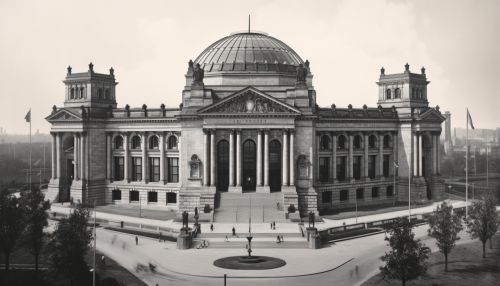Nazi Party
Origins and Early History
The Nazi Party, officially known as the National Socialist German Workers' Party (NSDAP), was founded in the aftermath of World War I in 1919. The party originated from the German Workers' Party (DAP), which was formed in Munich by Anton Drexler, a locksmith and railway toolmaker. The DAP was a small, insignificant group with a membership of approximately 40 people.


In September 1919, Adolf Hitler, a corporal in the German army, was sent to monitor the DAP. Hitler was deeply affected by Germany's defeat in World War I and shared the DAP's nationalistic, anti-Semitic, and anti-Marxist ideas. He joined the party and quickly rose to a position of prominence. Hitler's charismatic speeches and propaganda skills played a crucial role in attracting new members to the party.
In 1920, the party changed its name to the National Socialist German Workers' Party. The term "National Socialist" was intended to attract both nationalists and socialists to the party. The NSDAP adopted the swastika, an ancient symbol used in many cultures, as its emblem.
Beer Hall Putsch and Hitler's Imprisonment
In November 1923, the NSDAP, under Hitler's leadership, attempted a coup d'état known as the Beer Hall Putsch. The putsch was a failure, and Hitler was arrested and sentenced to five years in prison. During his imprisonment, Hitler wrote Mein Kampf ('My Struggle'), which outlined his political ideology and future plans for Germany.
Rise to Power
Following Hitler's release from prison in December 1924, he began to rebuild the NSDAP. The party gained increasing support during the late 1920s and early 1930s, a period of political instability and economic crisis in Germany. In the 1932 elections, the NSDAP became the largest party in the Reichstag, the German parliament.
In January 1933, Hitler was appointed Chancellor of Germany by President Paul von Hindenburg. Hitler used his position to consolidate his power and transform Germany into a totalitarian state.
Third Reich
The period from 1933 to 1945, when the NSDAP was in power, is known as the Third Reich. During this time, the party implemented policies of aggressive expansionism, racial purity, and totalitarianism, leading to the oppression and murder of millions of people.


The NSDAP's racial policies led to the systematic genocide of six million Jews during the Holocaust. Other groups targeted by the NSDAP included Romani people, disabled individuals, homosexuals, Jehovah's Witnesses, and political dissidents.
World War II and the Fall of the Nazi Party
The NSDAP's aggressive foreign policies and expansionist ideology led to the outbreak of World War II. By 1945, the Allied forces had defeated Germany. Hitler committed suicide in his bunker in Berlin on 30 April 1945. After Germany's surrender on 7 May 1945, the NSDAP was outlawed and its leaders were prosecuted during the Nuremberg Trials.
Legacy
The legacy of the Nazi Party is one of the most studied and debated topics in modern history. The party's ideology, policies, and actions during its time in power had profound and lasting impacts on Germany and the world.
